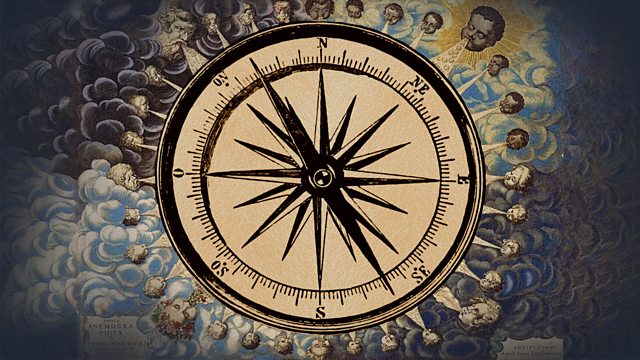Disorientation
Author Jerry Brotton explores the four cardinal directions, where they came from and how they have shaped both how we define ourselves and how we understand the world.
Author Jerry Brotton presents a five-part series exploring each of the four cardinal directions in turn – north, east, south and west – and the possibility that, in the age of digital mapping, we are being left disoriented.
Throughout history the cardinal directions have been crucial to virtually all societies in understanding themselves in relation to the wider world. More than points on a compass, they are ideas in their own right – creating their own political, moral and cultural meanings. They’ve shaped how we divide the world geopolitically into East and West (Orient and Occident) while contrasting the ‘Global South’ with the industrialised ‘Global North’ drives much current development policy, especially around climate change.
So why is north at the top of most world maps? The four cardinal points on a compass are defined by the physical realities of the magnetic North Pole (north-south) and the rising and setting of the sun (east-west) but there is no reason why north is at the top of maps, any other cardinal point would do just as well. The convention was developed by the western world. So why not put west at the top? Well, early societies refused to privilege the west because it was the direction of the sunset, where darkness and death reigned. For medieval Christianity, east was at the top, because that was the direction of the Garden of Eden, shown on many mappae-mundi. On early Islamic maps south was at the top, while Chinese maps used north because the emperor looked 'down' southwards and everyone else looked 'up', north.
Part 1 begins today with our apparent lack of any significant orientation. On a digital globe, and on Google maps, it seems cardinal points no longer matter - we place ourselves at the centre of the map. The result is an egocentric mapping whose only orientation is immediate gratification. We are left, quite literally, disoriented.
Series contributors include Google spatial technologist Ed Parsons, historian Sujit Sivasundaram, neuroscientist Hugo Spiers, author Rana Kabbani, journalist and editor for Bloomberg City Maps Laura Bliss, former head of maps at the British library Peter Barber, barrister and specialist in equality law Ulele Burnham, historian Felipe Fernandez-Armesto, author Irna Qureshi, geographer Alistair Bonnett, wayfinder and science writer Michael Bond, curator Rosemary Firman and historian of Islamic maps Yossef Rappaport.
Presenter: Jerry Brotton
Producer: Simon Hollis
A Brook Lapping production for ���˿��� Radio 4
Last on
Broadcasts
- Tue 19 Apr 2022 09:30���˿��� Radio 4
- Mon 7 Aug 2023 13:45���˿��� Radio 4

